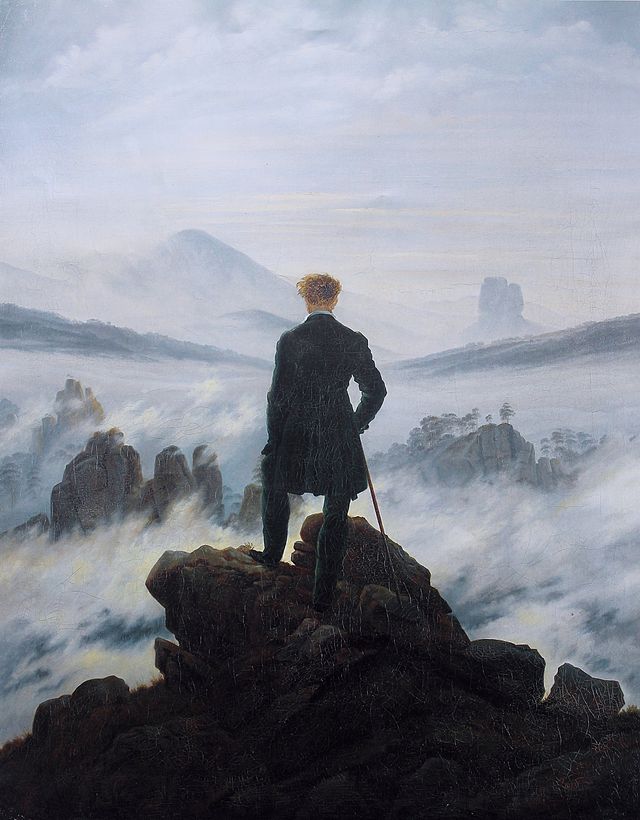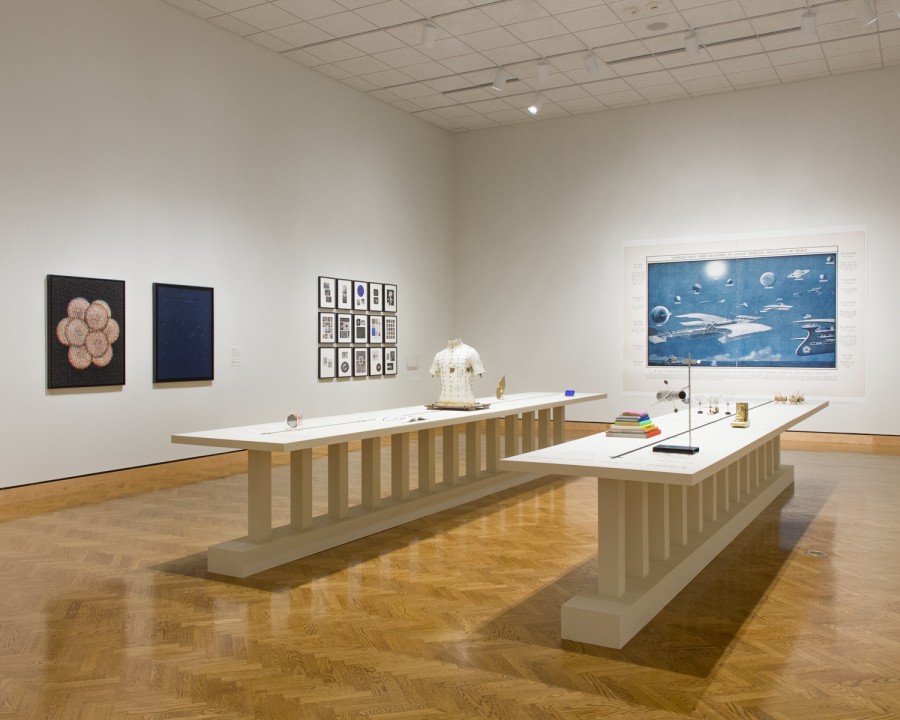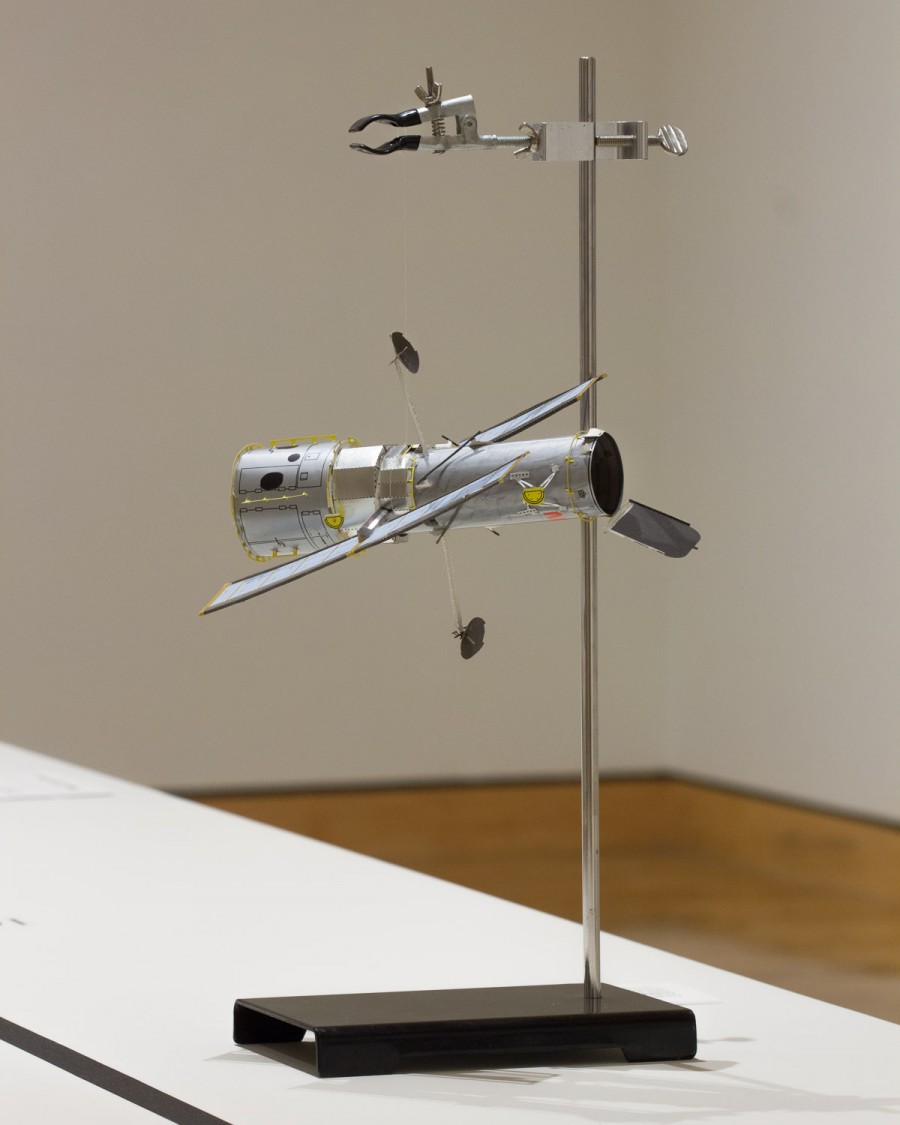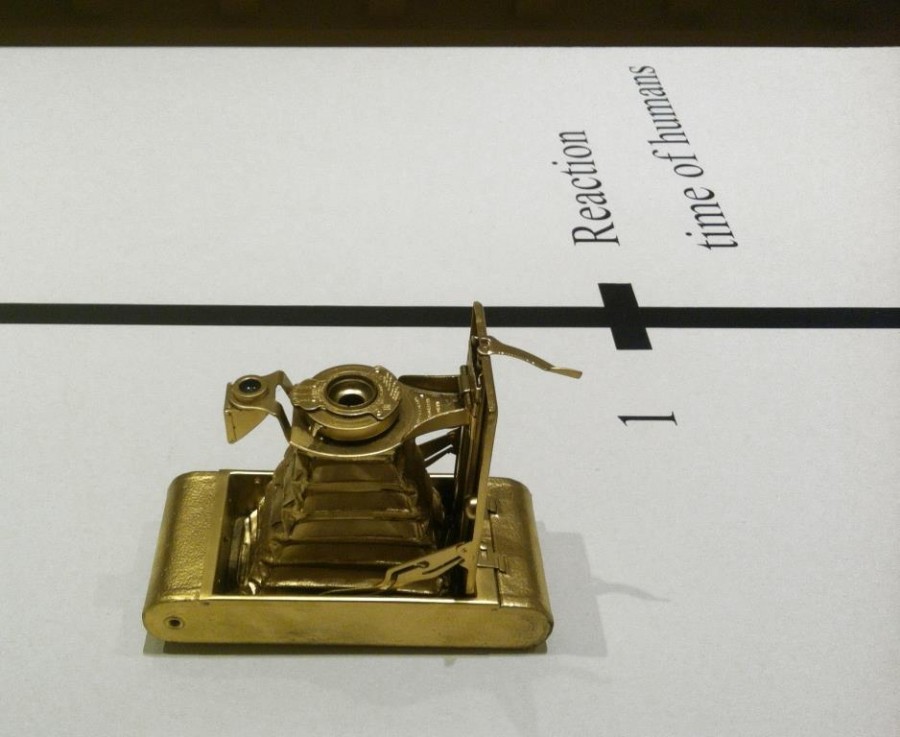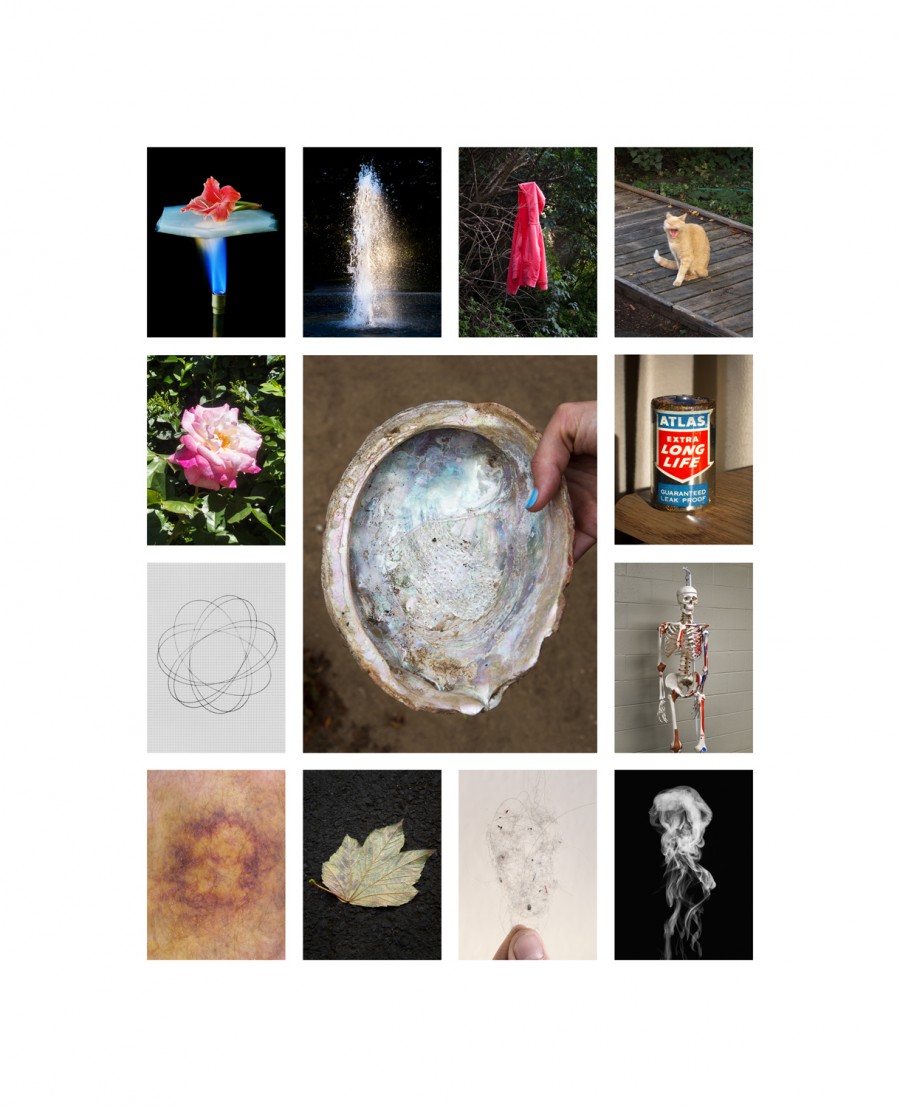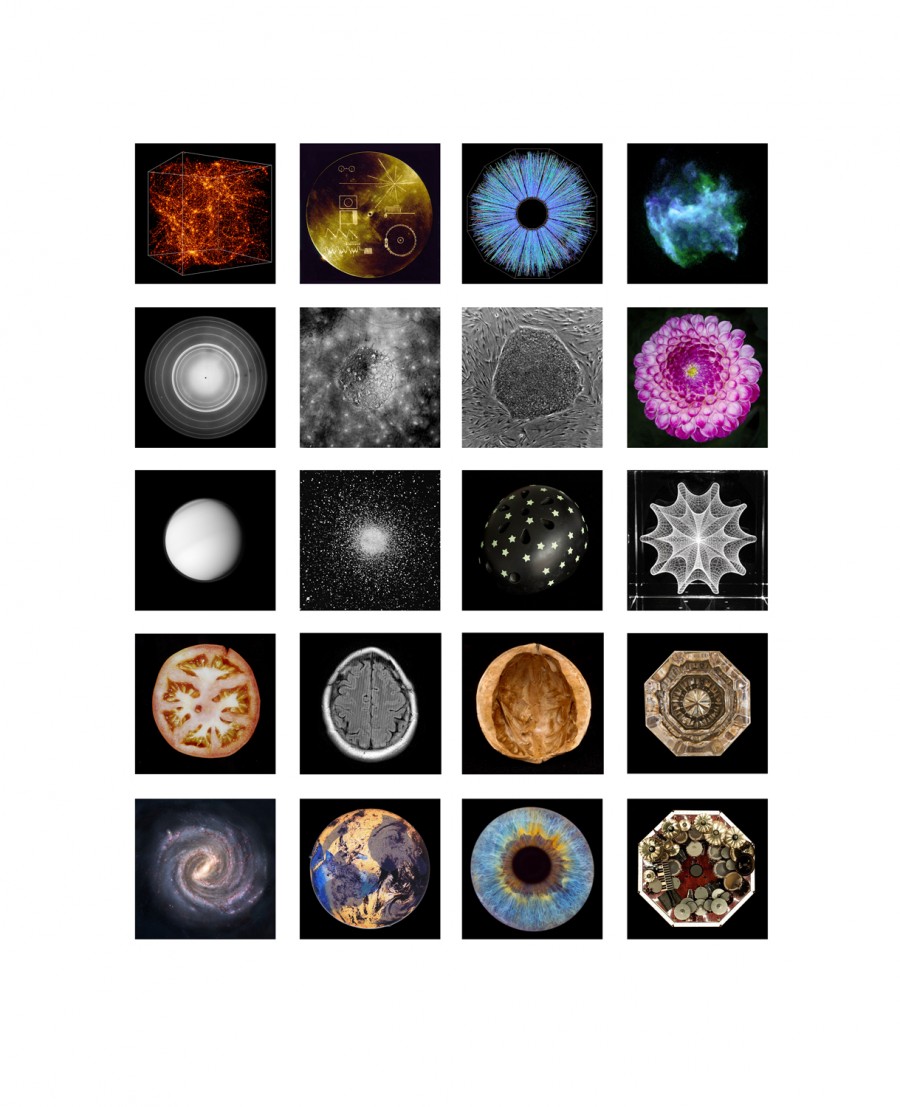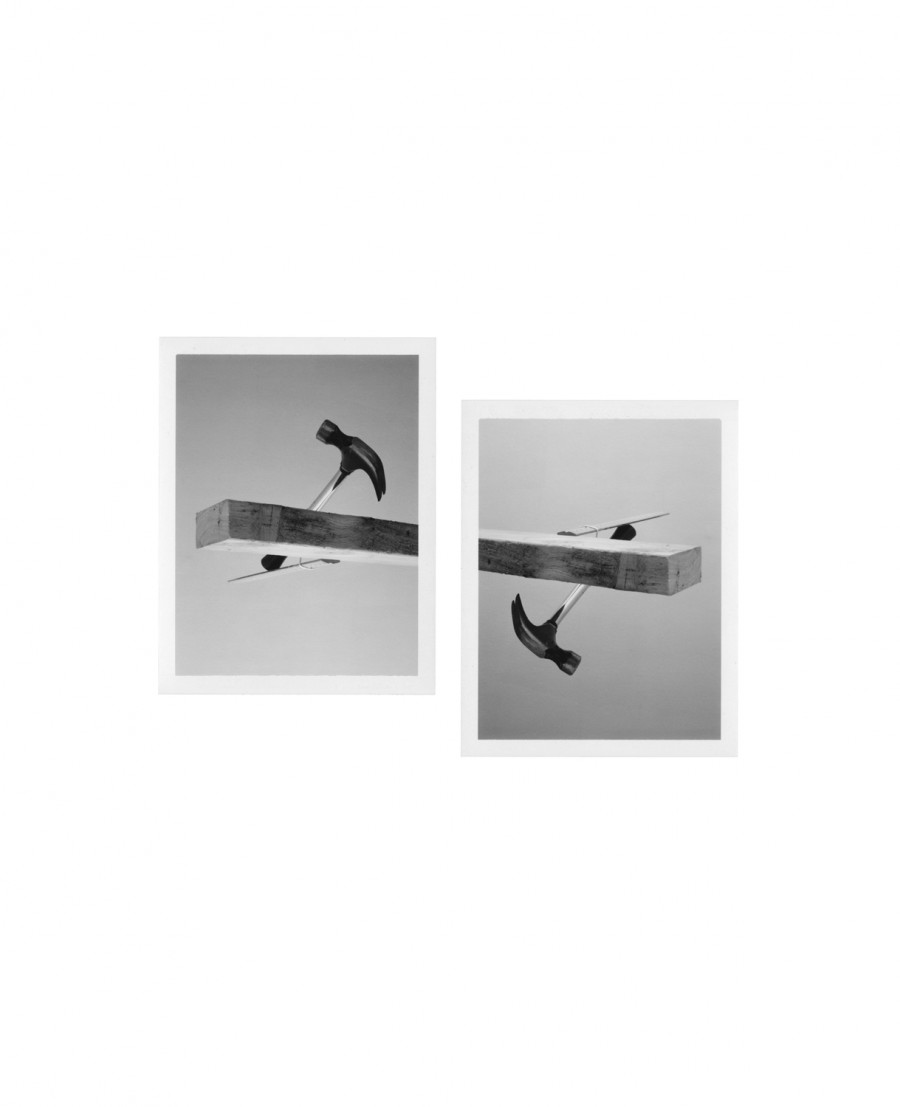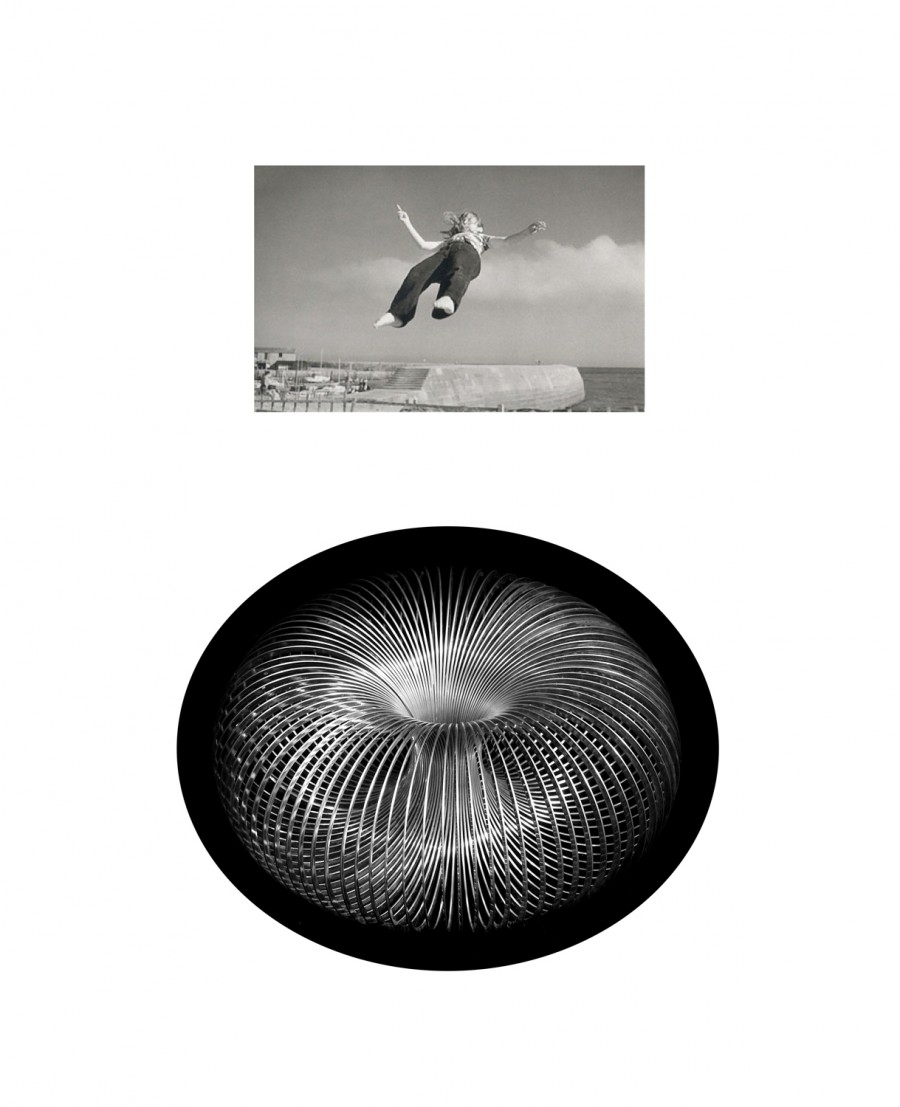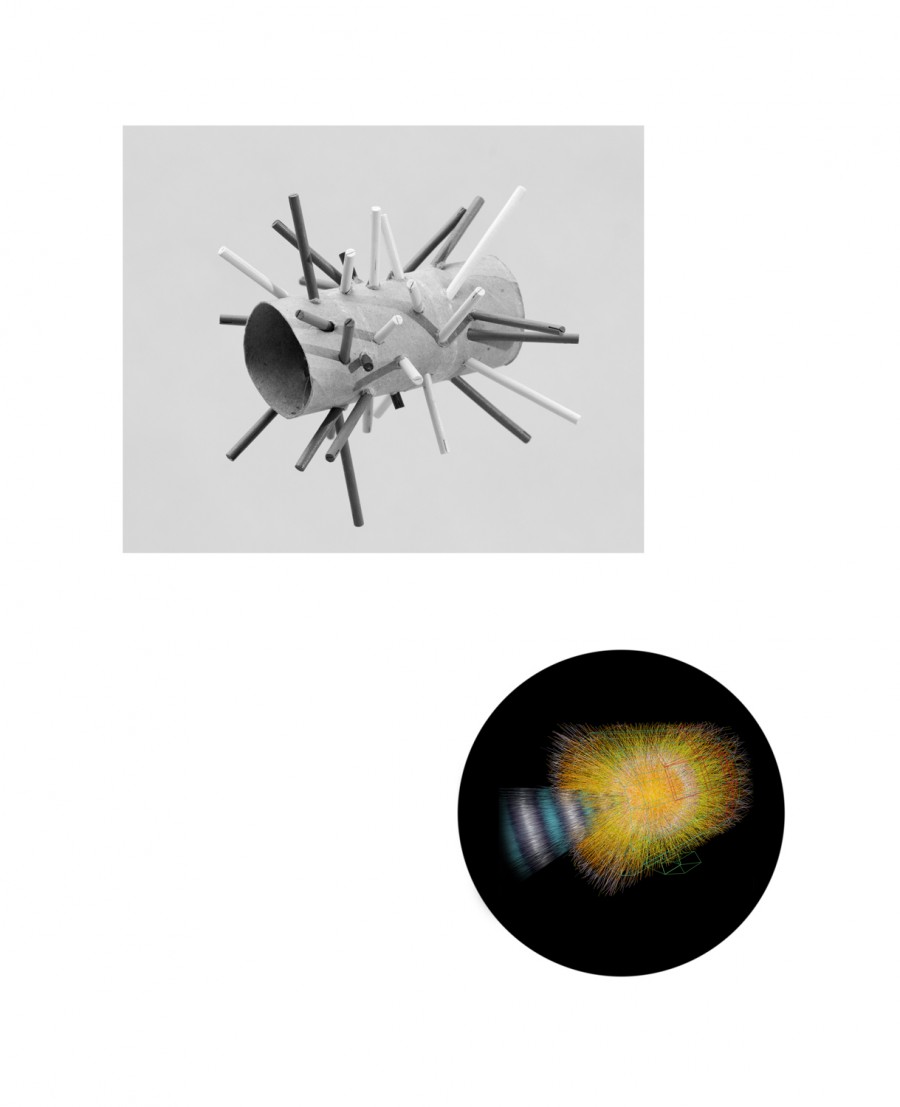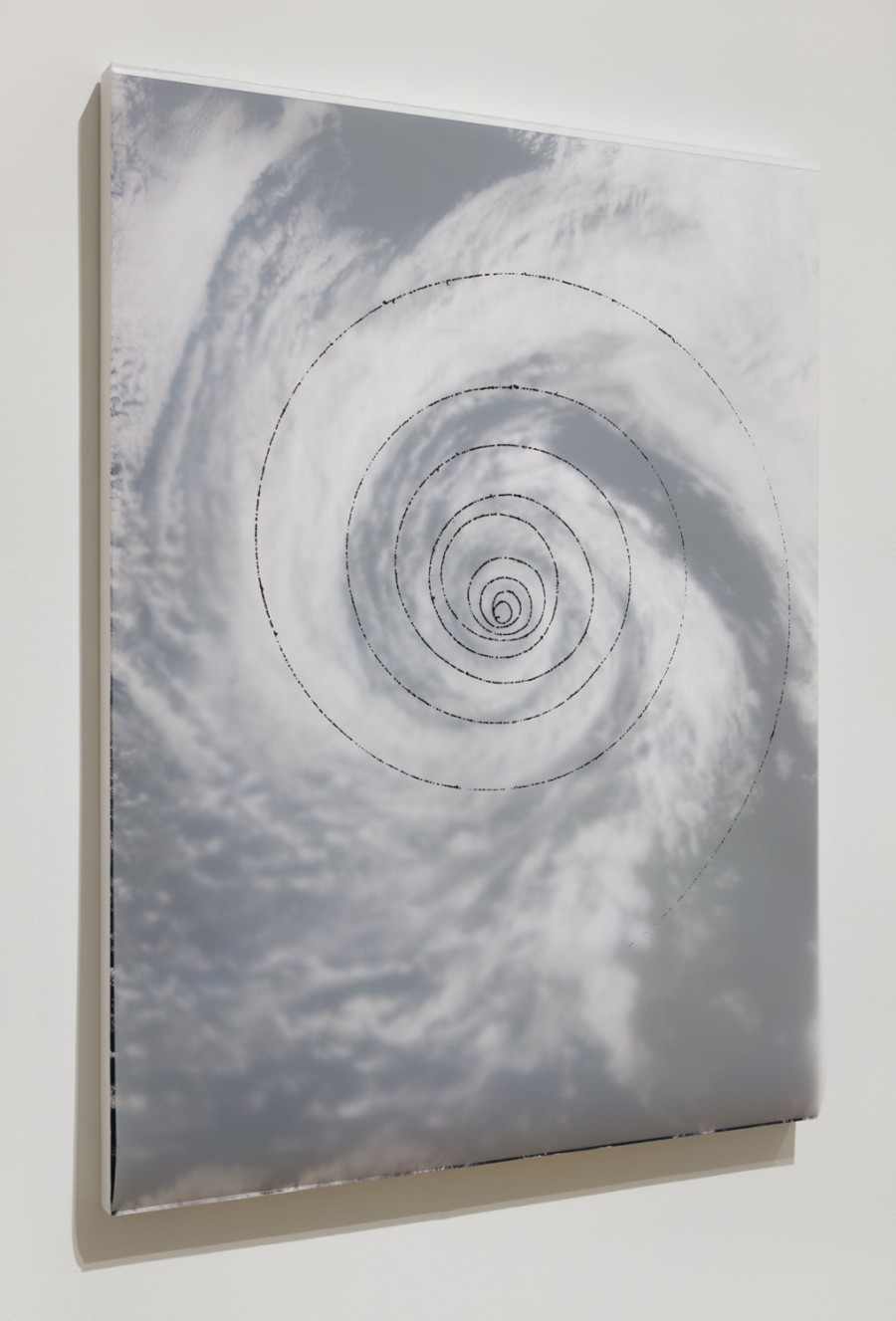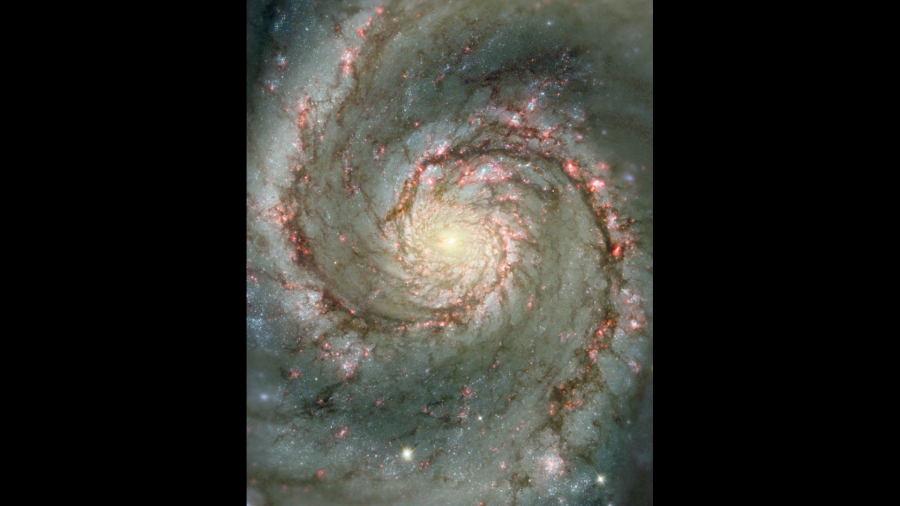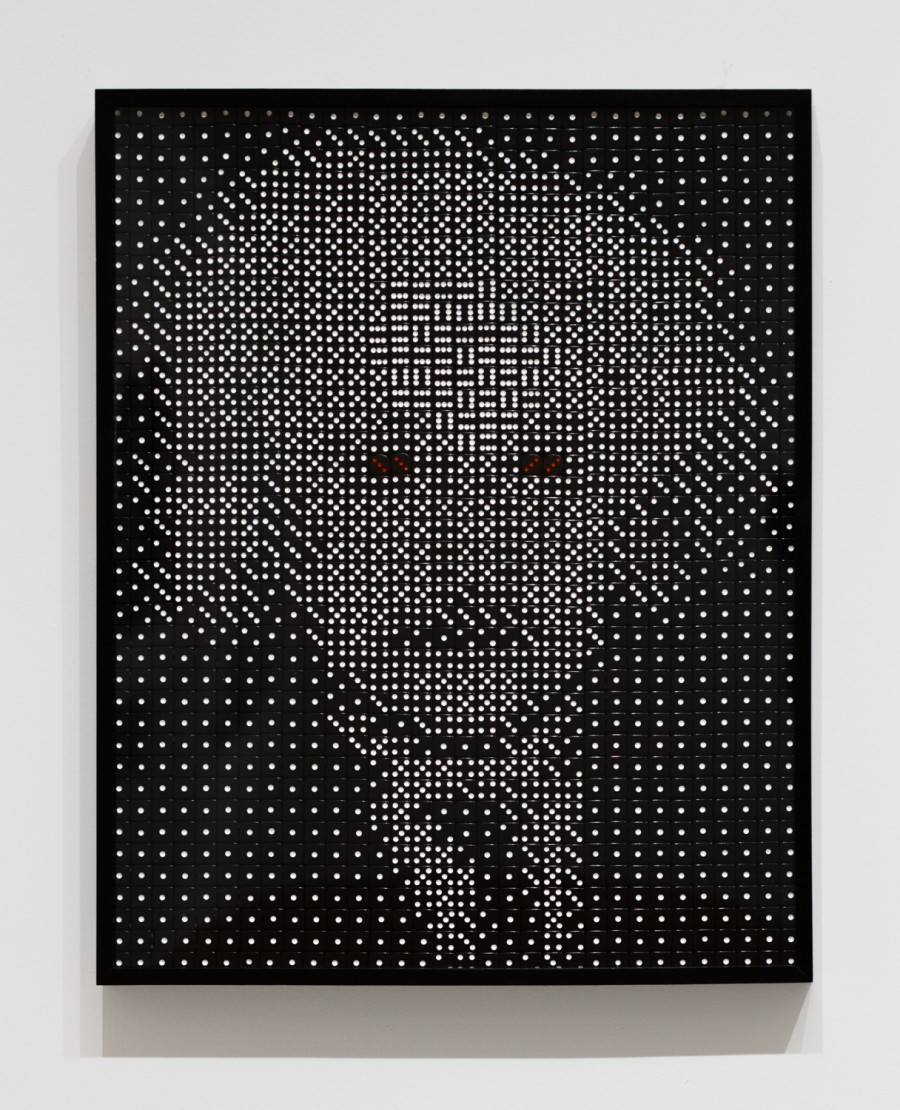A Sublime Feeling in My GUT
Lex Thompson on photography, the Hubble telescope and artists like Eric William Carroll, who are wrestling with the "astronomical sublime."

“You must cast off these absurd confusions and rebuild your conception of reality before the Geocubic concepts will get past the automatic rejection that occurs as your mind filters information against criterion of consistency intended to protect you from confusions but resulting in locking you into misconceptions.” – from Geocubic Theory, by Tom Gilmore (1988) as excerpted by Eric William Carroll in Figure 2.2 The Span of Time
I’m entranced by the images from the Hubble Space Telescope. When I first encountered the photographs several years ago, I didn’t know all that much about how they were made or even exactly what I was looking at – they showed something far away and much bigger than I could really conceive. I’ve read descriptions of the space gases and nebulas captured in the images, but I don’t really understand the science in a meaningful way.
Yet, I haven’t been able to stop looking at these photographs.
My appreciation of the images is visceral, aesthetic. Elizabeth Kessler calls it the “astronomical sublime;” she connects it to ideas of the American West depicted in photographs and paintings from the nineteenth-century by people like Albert Beirstadt, William Henry Jackson, Thomas Moran, and Timothy O’Sullivan. This framework, this art-historical vocabulary, is the one I can use to process my experience of the Hubble’s photos.
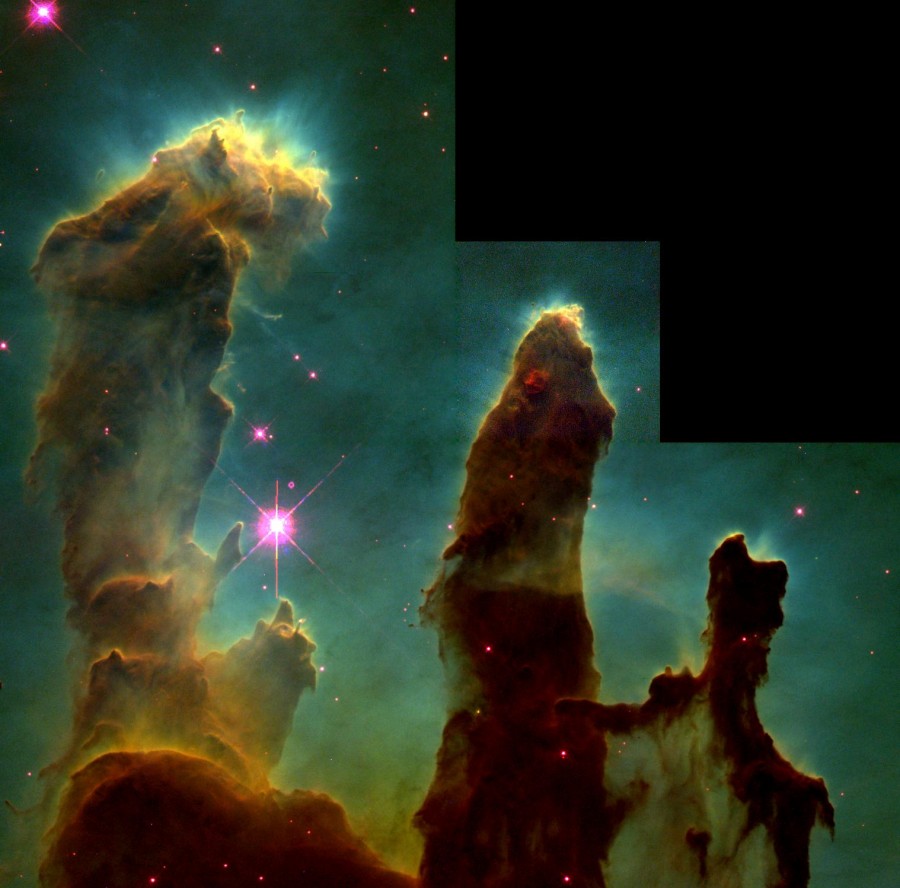
The sublime involves a sensation of wonder and awe so great it couples itself with fear and trembling. The nuances of this sensation have been worked out in many ways by many people, but most useful here is the explanation put forth by Immanuel Kant. For Kant, the sublime involves not only a coupling of awe and terror but also of reason – that is, the sublime resides not in the object itself but in the mind’s apprehension of it. He writes:
Thus the broad ocean agitated by storms cannot be called sublime. Its aspect is horrible, and one must have stored one’s mind in advance with a rich stock of ideas, if such an intuition is to raise it to the pitch of a feeling in which is itself sublime – sublime because the mind has been incited to abandon sensibility, and employ itself upon ideas involving higher finality.
In the end, he argues, it is reason that allows one to cope with this overwhelming experience of the boundlessness of existence. But I fear I am too much a product of the 20th century to plumb the profundity that is necessary to experience the Romantic Sublime firsthand. Luckily, there is another route to navigate my fascination with the Pillars of Creation and the Butterfly Nebula. Classic texts on the sublime often depict humanity in the face of such wonder in heroic fashion – say, Casper David Friedrich’s Wanderer Above the Sea of Fog (1817). I, for one, will gladly take NASA’s Flyaround of the Hubble Space Telescope (1997) as our contemporary perceiver of the sublime .
The Hubble images live in that liminal space between art and science, sensation and reason. Astronomers use various scanner arrays and sensors to assemble their research in ways that might be understood with the eyes. Hard scientific data is coded to color schemes and rendered accessible to sensory experience. We can use this crutch, this visualization of concrete data, to traverse the transcendent and grapple with complex concepts and abstractions that would feel insurmountable on their own.
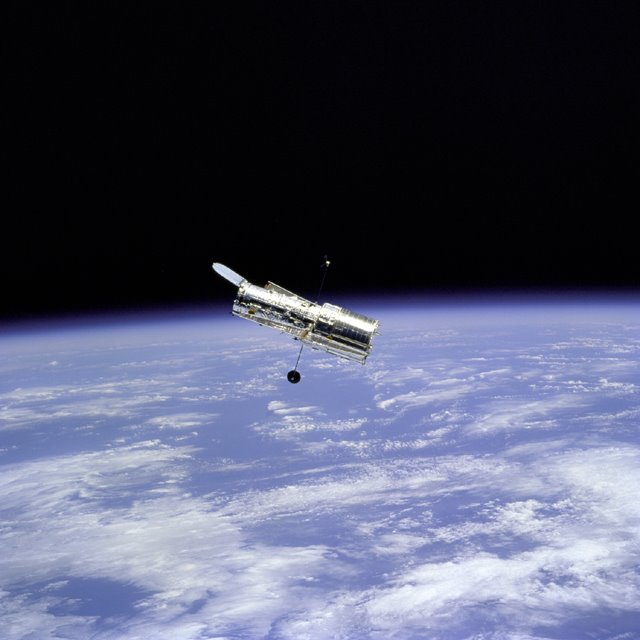
Grand Unified Theory (GUT) represents modern physics’ aspiration toward a model in which the fundamental forces of the universe might be merged into a single system of understanding. Such would be a big step in the direction of a Theory of Everything (TOE) which could explain, well…everything, or at least all the physical aspects of the universe. If looking at images of the cosmos invokes an aesthetic experience of the sublime, think of GUT and the subsequent TOE as its mental counterpart – a conceptual sublime.
It is into this space that artist Eric William Carroll sets off with his exhibition, G.U.T. Feeling, Vol. 2, at the Minneapolis Institute of Arts. Carroll uses the duality of scientific data and the way it is represented visually as his tools for tinkering with science’s attempts to address the sublime and answer the big questions – of being and the universe. In so doing, he is equally interested in moments when research is on the cutting edge of discovery, when it has been mistaken, and when it has turned out not to even really be science at all. Carroll’s installation pulls data universally, often from unexpected sources, in order to stretch both our understanding and experience of the world.
Carroll is primarily working with photographs, those he made as well as images appropriated from various archives and scientific publications. In both kinds of pictures, Carroll reminds us, regardless of the scale of the scientific inquiries involved (e.g. whether they’re macro investigations out into the cosmos or micro investigations into subatomic particles), the work of research is done with the aid of some sort of visual apparatus. In this way, at least, photography — reliant as it is upon lenses and other technical devices — is a kindred endeavor, a fitting approach by which to undertake a close reading of scientific ideas.
Carroll’s installation presents us with a number of images and objects, nearly all denoted as “Figure” followed by a number – named as if images collected in the few color pages at the center of some academic tome, referenced elsewhere in the surrounding blocks of text in chapters before and after. But in Carroll’s work, the images stand alone; there is no larger text to inform and contextualize them. We have captions for them in the Figures themselves and wall texts throughout the gallery. But there is no grand expounding of themes for reference beyond the physical world from which the images come and the cultural language we already possess.
The center of the room is filled by two tables topped with charts of space and time – ostensibly two sides of the same coin. Figure 2.1 The Span of Space charts space from the size of the universe, 1025 meters, to the size of an electron, 10-20 meters. Objects made by Carroll or on loan from individuals and institutions anchor notable increments on the chart. The expanse of the universe is marked by a dangling model of the Hubble Space Telescope on loan from Lucas Lesser, whose paper and plastic model of the telescope earned second place at the St. John the Baptist Catholic School Science Fair. The Span of Space’s fraternal twin, Figure 2.2 The Span of Time,charts time from 1020 seconds, the age of the universe, to 10-25 seconds, the “lifetime of unstable particles.” At briefest end of this chart, Carroll’s set a toilet paper tube and tinker toy constructions of particle collisions within the Hadron Collider. These simple means of representation rest near to other, more complicated and precise instruments, such as an astrolabe and a dark matter detector.
Instead of framing these scales of time and space from the poles of their reach, Carroll centers both space and time with us – humanity. To that end, he represents the space of the human body with Otto Schmitt’s Electrolytic Phantom Torso (1951-55), on loan from the Bakken Museum. The center of the Span of Time is a single second, the “reaction time of humans;” it’s marked by a physical artifact,Kodak #2-A Folding Brownie, a gold-painted camera. He’s rendered a sense of space and time that extends infinitely from Cartier-Bresson’s “decisive moment” as triggered by an electrified body. While Copernicus may have helped us shake free of the conception of the earth as the center of the universe, Carroll, in placing us at the center of his space/time tables, underscores that humanity is the unavoidable observer of all of these things. After all, why else would the acronyms of GUT and TOE be so corporeal?
Surrounding these tables are a number of individual pieces and works in clusters on the wall, each with its own unique configuration of space and time. In the large Figure 26, a sunset or sunrise sits in the center of a star field; as Carroll says in the wall text, “that single moment is multiplied countless times as potentially millions of sunrises and sunsets occur throughout the universe at any given time.” The image of the Subaru Deep Field is actually a pasted-together composite of laser prints, reminiscent of the way the Hubble image would have originally been assembled from multiple views to complete a picture of the whole grouping of stars.
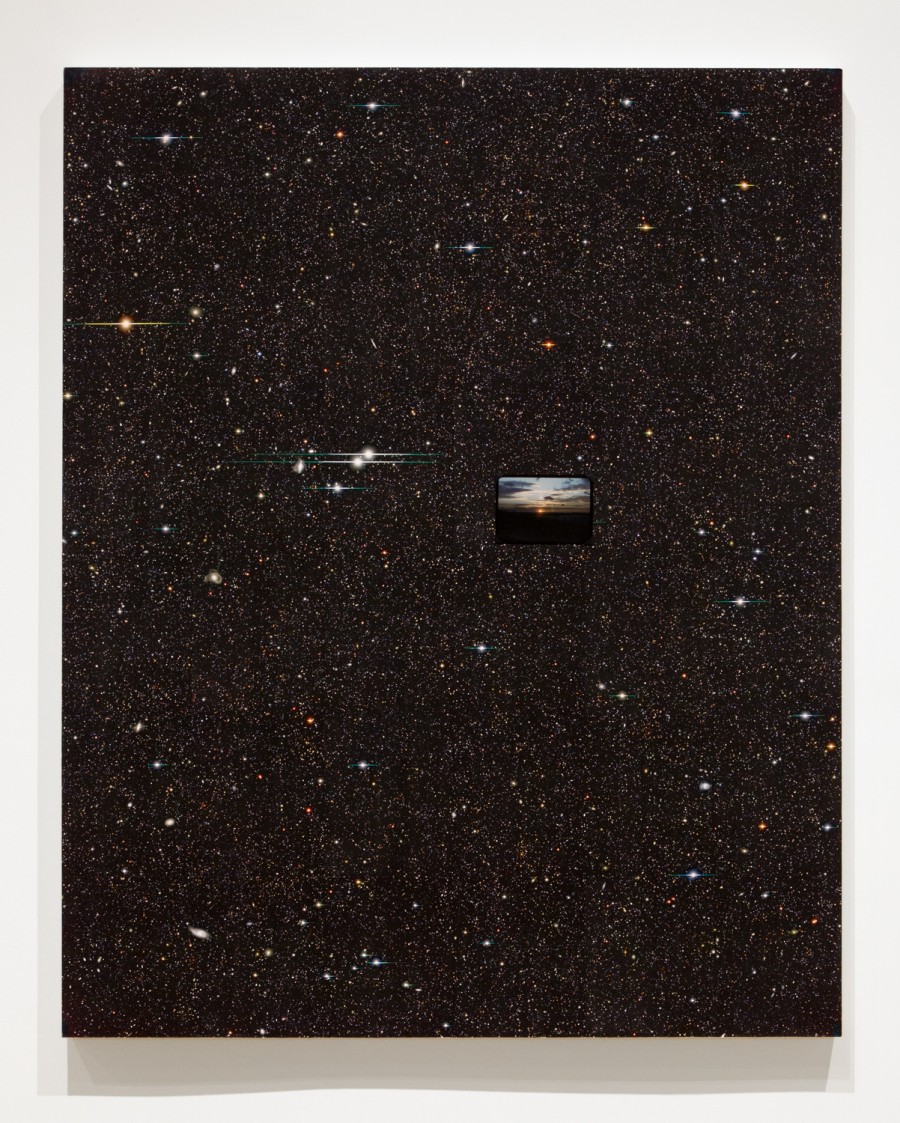
The sunset image in Carroll’s Figure 26 comes from the Farm Security Administration archives. It’s worth noting, FSA images also often evoke the westward push during the Depression, toward what was perceived as a frontier of hope during a hopeless time. While that migration, in actuality, panned out for very few, the optimism long associated with the West has much in common with that sense of anticipation and curiosity which spurs deep looking into the frontier of the spacescape – the same aesthetic similarity that Kessler finds between Hubble and Timothy O’Sullivan .
Carroll’s use of such visual resemblances endows his work with an underlying fractal resonance relating the chaos and chance of the everyday physical world to the analytic, controlled environment of experiment. The images included in Figure 69, for example, share morphological and chromatic similarities that allow one to move from a “hoodie found in Golden Gate Park” to a “yawning cat” around to a “toroidal vortex in smoke” and then to “dust found on studio floor.” Carroll’s groupings aren’t hunting for patterns where none exist, but are rather like equations for connecting disparate phenomenological experiences. In order to see just how inclusive these perceptions can be, one needs look no further than the 20 images assembled in Figure 29. The list of identifiers for each of the component images ranges from Voyager’s “Golden Record” to a pluot; also included are an embryonic stem cell, the Calabi Yau Manifold, a doorknob, and Neil Peart’s drum set. The subject of his images is just as likely to have come from the breakfast table as from the far reaches of the universe. But regardless of their provenance, Carroll brings the images together in a way that makes poetic, if not scientific, sense.
In Figure 28, a photograph of a hammer is delicately balanced from a board using a rope and a ruler. Adjacent, but slightly higher, so that the boards depicted in both images align, is an upside-down version of the same photograph — an improbable sort of hardware butterfly that uses the photograph to destabilize physics.
Carroll uses sometimes crude means to illustrate elegant scientific conceptions. The slinky of Figure 31 stands in for the Ricci curvature tensor, a geometric model related to the curvature of space-time. The tinker toys and toilet paper rolls of Figure 20 represent particle collisions within the Hadron Collider.
Carroll’s way of thinking in this exhibition is infectious. See his juxtapositions and your mind begins flipping through its own catalog of like and unlike images, building other idiosyncratically significant relationships, extending his model. As I look at Figure 38 — a vellum print of an electron spiraling in a bubble chamber floating on top of the spiral of an Icelandic low pressure system — I am reminded of both my own crude grade school science experiment sending particles through a small cloud chamber and Hubble’s refined image of the Whirlpool Galaxy.
Albert Einstein famously said “God does not play dice with the universe.” And so, Carroll has made a portrait of Einstein comprised of black dice with white dots, increasing or decreasing the density of visible white to generate value in the portrait by rotating each die to the proper number of pips. It is a remarkable likeness for such a restrictive medium. The deviation within the portrait is in the eyes, where the pips are red, making the normally affable looking Einstein appear quite livid, as if he’s shooting lasers from his eyes. Maybe the acceptance of quantum physics has finally gotten to him.
Carroll’s latest Grand Unified Theory is impelled by the same search for meaning, wonder, and cosmic structure that fuels counterpart investigations by scientists. But rather than taking data from such inquiries and assembling them into tidy formulae, Carroll collects the materials of those scientific findings and their visual corollaries from everyday life, and he strings them all together into a wholly new and eloquent interpretation of that experiential data.
It seems appropriate that a 21st-century experience of the sublime might encompass both lofty and intimate scales of experience, linking the wonder of vastly distant star systems with small pleasure of fondly remembered childhood toys; the proximity of feeling connecting the near incomprehensible complexity of quantum physics with the sense of defeat you feel when your popsicle splatters on the ground is similarly satisfying. There is an overwhelming and terrifying magnitude to these grand scientific ideas and, likewise, some comfort to be had in finding a way of understanding a semblance, if not the whole, of their meaning. Even if science cannot yet pin the idea down into an equation, maybe Carroll can help it along the way, supplying a visual understanding of cosmic design before the math gets worked out.
Related exhibition information:
Eric William Carroll’s G.U.T. Feeling, Vol. 2 is on view at the Minneapolis Institute of Arts Minnesota Artists Exhibition Program (MAEP) galleries from July 18 to September 28, 2014.
Lex Thompson‘s photographic work focuses on manifestations of hope and failure in the American landscape. With a BA in history from New College of Florida, an MA in Religion and the Visual Arts from Yale University, he continued his studies at the San Francisco Art Institute, where he received a Masters of Fine Arts in Photography. He is Professor of Art (Photography) at Bethel University in St. Paul, MN. He is recipient of a 2010 McKnight Artist Fellowship for Photographers, a 2008 & 2011 Minnesota State Arts Board Artist Initiative Grant. His artwork is included in collections at the Getty Research Institute, Museum of Fine Arts Boston, Museum of Fine Arts Houston, Stanford University, University of California Los Angeles, and Yale University, among others.
